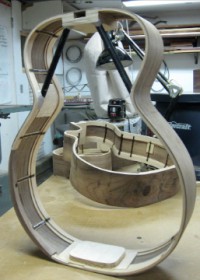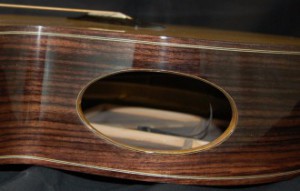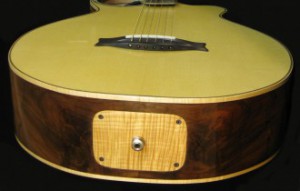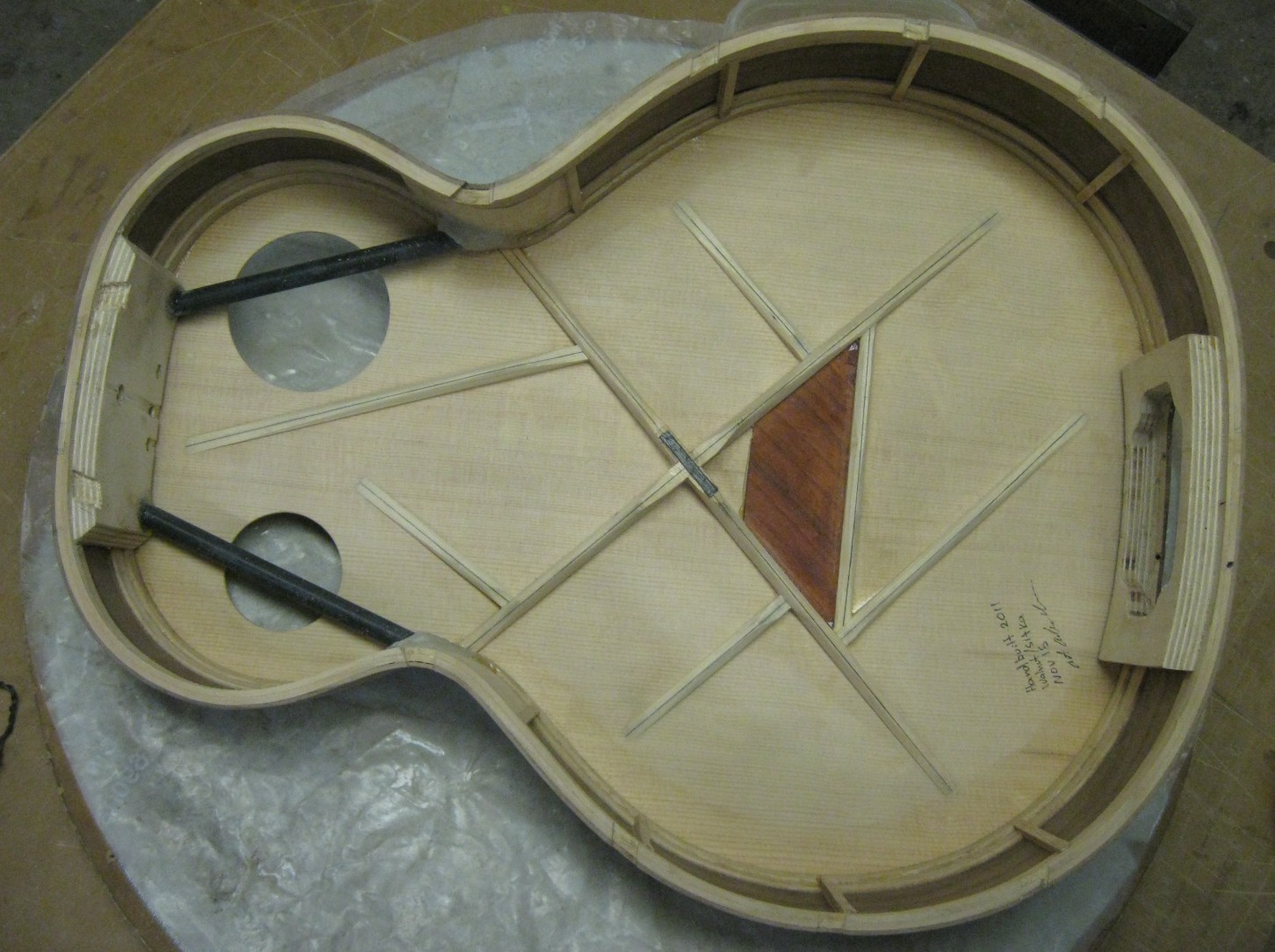Most steel string acoustic guitars share a fundamental design that was created around the turn of the 20th century, then refined and standardized prior to the second world war. An increasing number of innovative builders are asking the question: Is there a better way?
Artavox says YES!
Structure vs. Tone:
The six steel strings exert about 165 lbs of force when tuned to pitch. The guitar (as a structure) has two jobs that can be very much at odds.
- Resist this force and not implode.
- Be super light and free to vibrate as much as possible.
Traditional, central hole, “X” braced guitars use the top bracing to accomplish much of job 1; effectively removing almost half the top area from job 2.
 Here’s the Artavox approach:
Here’s the Artavox approach:
Buttresses:
Traditional construction has the fretboard extension glued to the top, which then has to be re-enforced from underneath with some very heavy bracing. This heavily braced area renders that portion of the top structural, rather than tonal.
Artavox guitars use a set of (carbon fiber) structural buttresses to resist the string pull and transfer the force to the rim of the body, rather than the top.
Neck joint:
Now that we no longer need the fretboard and its backing to resist string pull, the fretboard can float above the top, allowing the upper bout to vibrate, thus producing more sound.
This neck joint, derived from Mike Doolin’s design, is also fully adjustable. This allows easy, quick, external user adjustment of playing action with no alteration of the saddle height.
Access Doors and large Side Ports:


Adding access to the inside of the guitar from the side just makes sense:
- Soundholes can be sized and placed purely for tonal reasons.
- Players can change batteries without having to slack off their strings.
- Most of the internals can be seen without the use of a mirror. Luthiers can install electronics and perform all manner of repair work with ease , very often under full string tension!
Soundholes:
Traditional soundhole size and placement is an approximately 4″ hole in the centre of the guitar top. This size and placement evolved because it makes it possible for a repair person to reach inside and touch any part of the guitar’s interior.
This placement is also in the direct line of string tension, causing the force in the area around the hole to intensify by a factor of about three. Moving the hole to other areas of the structure gains back the lost strength, allowing a lighter construction.
Bracing:
Now the stage is set: We’ve relieved the top of the extreme down force of the fretboard extension (and it’s underlying bracing). We’ve provided access to the interior without affecting the top strength and hole placement in any way.
NOW we can focus on bracing for tone, free of the limitations of traditional construction; wether modifying existing patterns, or, designing a new bracing system from the ground-up (as seen in the M series).
All Artavox bracing also utilizes a laminated Carbon Fibre re-enforced construction for better performance and longevity.
Bridge:
Ever dropped/lost a bridge pin at a gig? Never again with this brilliant pin-less design by Jeffrey Elliott. The ball ends are held by hardened steel studs that anchor in the bridge, top and bridge plate; ensuring maximum energy coupling.


